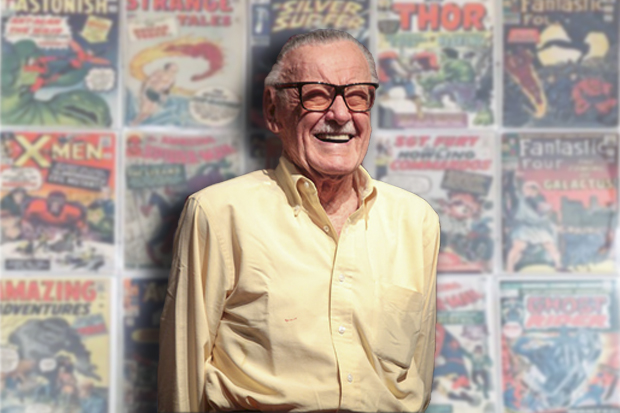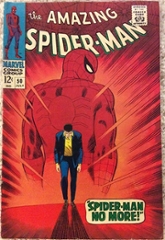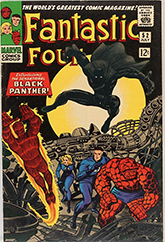Professor Thomas Doherty remembers comic legend Stan Lee
 Photo/Julian Cardillo and Gage Skidmore
Photo/Julian Cardillo and Gage SkidmoreStan Lee created an entire universe of characters as editor and publisher of Marvel Comics
Stan Lee, an entertainment visionary who transformed the comic book medium, died at 95 on Nov. 12. Lee spawned an entire universe of popular characters like Spider-Man, the Fantastic Four, the Hulk, Black Panther, and the X-Men, in a decades-long career as Marvel Comics’ editor and publisher.
Lee’s legacy is typically defined by his commercial success; his creations are prevalent in comic book culture, toys, and in countless films that collectively have grossed billions of dollars worldwide.
But Lee was also an exceptionally prolific writer who managed to add depth and resonance to the previously flat comic book medium. In his heyday from the late 1950s to the early 1970s, he compiled one new comic issue every 10 days, and spawned a stable of super heroes with deep, human flaws with which millions of readers – and later, movie viewers – identified.
American Studies professor Thomas Doherty, an expert on Hollywood and comic books, teaches about Lee and the world of comics in his course “American Graphic: Comics, Graphic Novels, and Graphic Nonfiction.” He spoke to BrandeisNOW about Lee’s legacy.

Stan Lee obviously had a huge impact on popular culture and entertainment – but can you discuss his impact on both the comics medium and the field of American Studies?
Thomas Doherty: Stan Lee is one of those people that helped the field of American Studies look at bizarre material – he made comics and comic art worthy of critical intelligence. In the 1960s, Lee brought a new wit and intelligence and psychological insight into what were basically one-dimensional characters stuck in a two-dimensional medium.
If you were there, like I was at 10 or 11 years old, you were seeing a new art form emerge, especially if you had grown up on Walt Disney or Superman in the DC Comics.
Many credit Lee for introducing flawed characters to the comic medium. What was so new about this?
He changed comic art. Lee created superheroes that were endowed with powers but were nevertheless psychologically identifiable human beings with flaws, and that was different.
These were human beings and they also brought a moral tone to the comics. You see this in the open-minded tolerance of his X-Men, which were all about accepting people that may look different or seem weird. His comics speak to tolerance. And in Spider-Man, the moral lesson is “With great power comes great responsibility,” which basically means if you do have talent or power it’s not for free reign, it’s to use for others’ well-being. His comics were a very progressive force.

Many of these themes about tolerance, equality and social justice came about during the Civil Rights movement. How was it that this resonated with so many people?
The culture was ready for it. It’s truly great when an artist has intuitive communication with the audience’s sensibilities.
There was a phase in Lee’s comics, from 1962 to 1968, when the comic world and everything else was becoming more complex. It was all opening to other issues. Where comics used to be have one-dimensional characters in a two-dimensional medium, Stan made his characters three-dimensional in the universe he created.
For about two decades now we’ve seen Lee’s comic creations – and the lessons they were meant to teach – in blockbuster live-action films. What’s been more influential to American culture, his comics or the movies they inspire?
They’re both equally influential. Lee also didn’t create all these things himself. His illustrators, Jack Kirby, most famously for the Fantastic Four, and Steve Ditko for Spider-Man, were very good collaborators, but you can make a strong case that he’s the generative force.
The Marvel comic universe has a fantastic spirit. And Lee’s legacy is a remarkable one when you consider the tens of billions that the film adaptations now gross. But, in some ways, it’s hard for the Marvel establishment to recapture the magic of the 1960s.
The films don’t score to the extent they do because of special effects. A lot of them are good because of their wit and psychological depth. Some of us get tired with the 20-minute fight scene at the end of these superhero movies because we’re more interested in seeing the characters struggle through their problems. In that way, they have heart. The Marvel films that truly click are the ones that have that depth.
Categories: General





